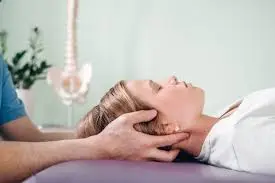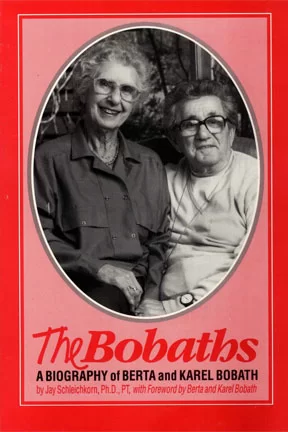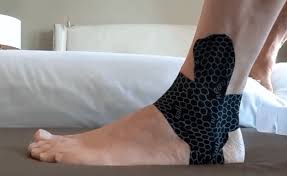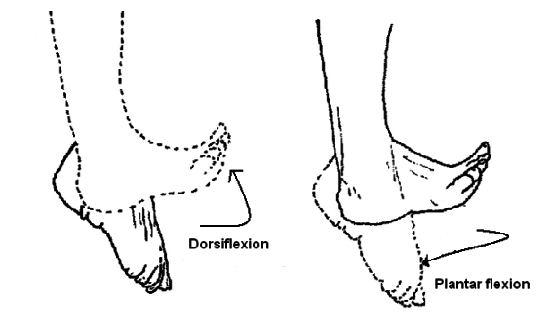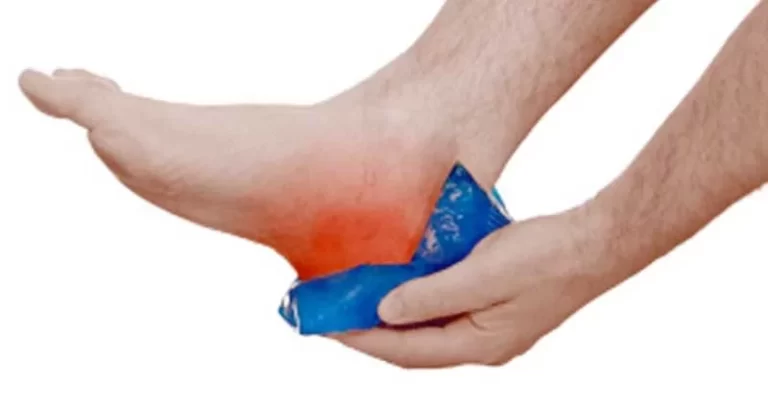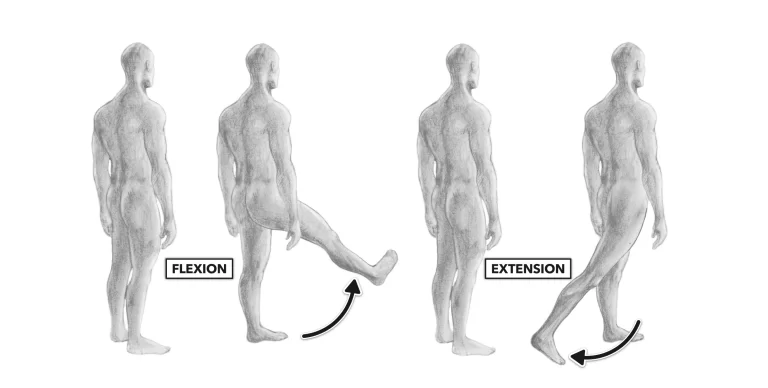Craniosacral Therapy
Table of Contents
Introduction
Craniosacral therapy (CST) is a gentle, non-invasive, hands-on method of healing that uses a light touch to release restrictions in the craniosacral system. The craniosacral system is a network of membranes and fluids that surrounds and protects the brain, spinal cord, and nerves. It is also connected to the fascia, which is a connective tissue network that runs throughout the body.
It releases tension around the fascia, the network of connective tissue in your body, with a gentle touch. CST can reduce pain associated with cancer treatment side effects, headaches, and neck pain.
Craniosacral treatment is an elective treatment regularly utilized by osteopaths, alignment specialists, and massage therapist
It claims to utilize a gentle touch to control the joints in the cranium or skull, portions of the pelvis, and the spine to treat sickness.
Craniosacral treatment (CST) was created during the 1970s by John Upledger, a specialist in osteopathy, as a type of cranial osteopathy.
While CST has numerous supporters and is utilized to treat a few ailments, it has gotten a lot of analysis. In this article, we look at the two sides of the discussion to assist individuals with figuring out the possible dangers and advantages of CST.
What is Craniosacral therapy?
In craniosacral therapy, two types of gentle manipulation are used.
The cranial (head) bones’ sutures or connections may be slightly compressed by the therapist.
Additionally, the therapist applies light pressure to the head, neck, or spine to divert attention.
It is thought that by making these changes, the nervous system and the supporting structures around it will return to balance.
A mild, noninvasive, hands-on treatment called craniosacral therapy, or cranial sacral therapy (CST), may help with pain management, including headaches and neck discomfort, as well as side effects from cancer treatments. A medical professional might suggest CST in addition to other therapies.
Craniosacral treatment includes applying gentle pressure and manipulation to the joints in the skull, spine, and portions of the pelvis. CST is a painless, involved treatment that expects to upgrade the body’s own healing capacities.
As per the Upledger Foundation, CST utilizes a dash of under 5 grams to “discharge limitations in the craniosacral framework to work on the working of the focal sensory system.”
This light touch is said to influence the tension and flow of cerebrospinal liquid, which is the liquid around the mind and spinal line. This interaction is remembered to alleviate pain and dysfunction.
It is believed that the normal flow of cerebrospinal fluid throughout the central nervous system can be achieved by carefully manipulating the bones in the skull, spine, and pelvis. The “blockages” from the regular flow are removed, which improves the body’s capacity to heal.
Numerous physical therapists, chiropractors, osteopathic physicians, and massage therapists are able to do cranial sacral therapy. It may be the only reason for your appointment, or it may be a component of a therapy visit that is already planned.
Professionals claim that CST can be done as an independent therapy or utilized related to clinical or other elective treatments.
Depending on what you’re utilizing CST to treat, you might benefit from three to ten sessions, or you might benefit from maintenance sessions. You can decide what’s best for you with the assistance of your healthcare provider.
Make an appointment with a licensed health practitioner, such as a physical therapist or osteopathic physician, for optimal outcomes.
History of Craniosacral Therapy:
The theories and methods that are currently recognized as craniosacral therapy were developed by two osteopathic doctors, to the general consensus.
In the 1930s and 1940s, Dr. William Sutherland created the theory of cranial osteopathy after observing that patients with a variety of conditions could recover greatly from mild manipulation of the head and neck.
In the 1970s, Dr. John Upledger rediscovered this method, and he has contributed to the advancement of the scientific basis and therapeutic approach.
There is proof that the cranial sutures—the connections between the bones that make up the skull—move somewhat or play a little.
The fluid that surrounds and cushions the brain and spinal cord, known as cerebral spinal fluid (CSF), appears to have a regular flow.
Our understanding is that some physical or mental issues might cause disruptions in the regular rhythmic flow of CSF and the movement of sutures, though this is difficult to demonstrate objectively. It is hoped that a therapist’s mild manual therapy may help these areas return to their natural range of motion.
How is craniosacral treatment administered?
The goal of CST is to assist in the release of tension in your body’s connective tissue by gently placing your hands on certain areas. The term “fascia” (pronounced “fash-ee-uh”) refers to this. The Latin word band is termed fascia. Your body is made up of a casing that houses your blood vessels, brain, spinal cord, muscles, glands, organs, and nerves. Within the body, the fascia creates a network of connective tissue.
The anatomical and functional components of the human body are interdependent. This implies that there can be an impact on one body part from another. CST aims to relieve tension (fascial clearing). This could improve the way that other related body components operate by:
- Self-regulation.
- Self-correction.
- Self-healing.
What conditions does Craniosacral therapy treat or manage?
Craniosacral therapy may help to manage the symptoms of the following diseases:
- Autism
- Back pain
- Brain injury
- Central nervous system disorders
- Chronic fatigue
- Colic
- Concussion
- Dementia
- Fibromyalgia
- Immune disorders
- Learning disabilities
- Migraines
- Neck pain
- Post-traumatic stress disorder (PTSD)
- Scoliosis
- Spinal cord injury
- Stress
Craniosacral therapy may help to improve the nervous system function, relieving pain and improving mobility.
CST has been used to treat a variety of conditions, including both physical and psychological.
Craniosacral therapy should be a treatment that a doctor suggests in addition to another form of treatment.
Is craniosacral therapy right for everyone?
Patients of all ages, including adults and children, may benefit from craniosacral therapy.
If you recently experienced one of the following, your healthcare professional may postpone craniosacral therapy until you’re well enough for treatment.
- Blood clots.
- A concussion.
- Brain swelling.
- Brain aneurysm.
- Chiari malformation.
Any medical condition that results in an accumulation, flow, or pressure of cerebrospinal fluid.
You will be informed by a medical professional if you are an appropriate applicant for CST.
Procedure:
The main difference between a massage therapy and a craniosacral therapy session is that you remain fully dressed. There can be soothing music playing and dim lighting in the space to help with your relaxation.
Your experienced therapist will consult with you before the treatment session starts. They will enquire about your medical history, your current state of health, and the session’s objectives.
Your doctor will inquire about your symptoms and any underlying medical conditions when you first come for your appointment.
Be sure to arrive at your appointment wearing comfortable attire, as you will be fully dressed during the procedure.
You will probably start your hour-long session by reclining on your back on the massage table. The practitioner starts from the head, foot, or somewhere in the middle of your body.
You will lie on a massage table during your session, or if necessary because of unique circumstances, you may sit in a chair. Throughout each session, your therapist will check in with you to make sure you are comfortable. Before they touch your body, they will also make sure you understand what they’re doing. Notify your therapist if you are uncomfortable at any point.
The provider will gently hold your head, feet, or sacrum with five grams of pressure, or roughly the weight of a nickel, so you may listen to their tiny rhythms.
Your therapist will gently apply pressure with their hands to the parts of your body that are causing you symptoms, such as your head, neck, and back (around your spinal column).
To restore the regular flow of the CSF fluids, they could gently press on you or move you if they think it’s necessary. They might support one of your limbs while applying tissue-release techniques.
Deep relaxation is a common side effect of craniosacral therapy.
Different feelings are felt by various patients during the course of treatment. They could consist of:
- Experiencing deep calm
- Falling off to sleep, then waking up with memories or seeing colours
- Detecting heartbeats
- Experiencing a numbing, “pins and needles” sensation
- Feeling either hot or cold
Duration of Craniosacral therapy
Craniosacral therapy sessions might last anywhere from 30 to 60 minutes. It can take more than one session to reach the goals you want.
To facilitate at-home relaxation in between appointments, you can learn how to massage your head and neck with trained experts. Only experts who have received training and education in craniosacral therapy are authorized to utilize this treatment.
While in a session
Your practitioner will carefully listen to the reasons for your visit and take a written case history during your initial session. This portion of the session is crucial for getting information and building trust with your practitioner. Though it might vary, the session usually lasts an hour. You stay fully clothed and typically lie face up, on your side, or even in a chair. Your head, the base of your spine, and other parts are lightly touched by the practitioner to help your body relax and start undergoing the necessary modifications. Your doctor may concentrate on places other than those where your symptoms manifest because the body functions holistically.
In the longer term:
As part of the healing process, there may be a brief adjustment period following a session during which you may become more conscious of your symptoms. People occasionally report feeling better after just one or two sessions. Additional sessions could be required for persistent issues. Some report that they have better quality of life and more self-awareness in addition to observing improvements in their physical or emotional problems when receiving treatment on a long-term basis.
The purpose of craniosacral therapy is to complement the medical treatment that you receive from your doctor, not to replace it.
By whom is a craniosacral treatment performed?
Among the medical professionals and therapists who use craniosacral treatment are:
- A chiropractor.
- A physician with osteopathic medicine (DO).
- An occupational or physical therapist.
- A certified massage practitioner.
Benefits of Craniosacral Therapy
The following are just a few advantages of craniosacral therapy:
- Easing of pain.
- Calm down.
- Enhanced emotional health.
- Reduction of stress.
Numerous patients report feeling better after receiving craniosacral therapy, according to studies. Because every person’s circumstances and motivation for therapy are unique, your outcomes may differ. Studies are being conducted to learn more about craniosacral treatment’s efficacy in treating various medical disorders.
Indications of Craniosacral therapy
Compression in the head, neck, and back is said to be released by CST. This can reduce discomfort and relax tension in the body as well as the mind. It may also help relieve or release constraints related to the head, neck, and nerves as well as aid in the restoration of cranial mobility.
The application of craniosacral treatment can be for all ages. It could be a part of your care for ailments such as:
Experience at UPMC and elsewhere has revealed advantages for a number of problem categories, including:
- Temporomandibular joint pain, tension headaches and migraines, and other facial pain issues
- Pain in the lower back, shoulder girdle, and neck
- Posttramaic injury of head and neck
- General problems such as fibromyalgia and chronic fatigue syndrome
- Alertness, concentration, or memory problems
- Anxiety or stress problems
- Migraines and headaches
- Constipation
- Irritable bowel syndrome (IBS)
- Disturbed sleep cycles and insomnia
- Scoliosis
- Sinus infections
- Neck pain
- Fibromyalgia
- Recurrent ear infections or colic in infants
- TMJ
- Trauma recovery, including trauma from whiplash
- Mood disorders like anxiety or depression
- Difficult pregnancies
Although there is a wealth of anecdotal data supporting the effectiveness of CST, further studies are required to make this conclusion. While some studies indicate that it might only work for babies, toddlers, and kids, there is evidence that it can help reduce stress and tension.
However, other research suggests that CST might be a useful treatment for some illnesses or at least a useful component of a treatment regimen.
According to a study, it proved useful in easing migraine sufferers’ severe symptoms. According to a different study, CST helped fibromyalgia sufferers manage their symptoms, which included pain and anxiety.
Contraindications for Craniosacral Therapy:
There aren’t any particular restrictions on using craniosacral therapy.
Like other complementary therapies, craniosacral therapy should not be utilized in place of conventional medical care.
Risks of Craniosacral therapy
Mild soreness after treatment is the most frequent adverse effect of cranial sacral therapy when administered by a qualified professional. This is usually transient and goes away in a day or two.
There are some people who should not utilize CST. Among them are those who have:
- Severe bleeding disorders
- An aneurysm that has been diagnosed
- A history of recent traumatic head injuries, such as skull fractures or cranial Haemorrhage
A mild, noninvasive, and alternative form of treatment is craniosacral therapy. As a result, there are a few hazards and potential side effects, which could include feelings:
- Lightheaded.
- Tired.
- dizzy.
- Mild discomfort.
Recovery:
After receiving craniosacral therapy, some patients experience instant symptom improvement. Others could require a few days for their bodies to adjust to the way the treatment changed how their bodies functioned. Before you notice results, it may take multiple sessions spread over a few weeks to months, depending on your treatment goals.
When should I call my healthcare provider?
After a craniosacral therapy session, if you have significant pain, discomfort, or new or worsening symptoms, get in touch with your healthcare professional. Consult your healthcare practitioner for guidance if something doesn’t seem quite right with your body.
Summary:
A craniosacral therapy is an alternate, noninvasive treatment that can assist you in reducing symptoms, particularly pain. To release stress, a skilled medical professional will gently place their hands on your head, neck, and back. It’s possible to feel lightheaded or dizzy after a session. After your treatment, take your time getting up and moving about to avoid falling. A few sessions could be necessary to help you achieve your treatment objectives. If your signs worsen, talk to the health care provider.
The best data supports the use of craniofacial sacral therapy as a treatment for headaches, while it may be able to relieve other ailments as well. There is extremely little chance of negative consequences, thus some people might prefer this over prescription drugs that have higher risks.
Prior to your consultation, make sure you ask your healthcare practitioner if they are licensed for CST; if not, find a provider who is.
FAQs
What does craniosacral treatment mean?
John Upledger named the process of relieving limits “craniosacral therapy” because of the idea that these restrictions changed the fluid/wave motion from the cranium to the sacrum.
How safe is craniosacral therapy?
Having said that, craniosacral therapy is safe for the majority of patients, irrespective of age or condition. Cerebrospinal fluid leakage is one ailment for which we believe craniosacral treatment is contraindicated.
Why is craniosacral therapy beneficial?
This can reduce discomfort and relax tension in the body as well as the mind. It’s also supposed to assist relax or release constraints related to the head, neck, and nerves as well as restore cranial mobility. People of various ages can benefit from craniofacial sacral therapy.
What adverse reactions can craniosacral treatment cause?
Complications include depression, disorientation, headaches, diplopia, vertigo, nausea, vomiting, loss of consciousness, hypopituitarism, brainstem dysfunction, opisthotonus, various seizures, and a possible 12-week pregnancy miscarriage.
What is the duration of craniosacral therapy?
A typical CST session takes place in a calm, private location and lasts between 45 and 60 minutes. The client lies on a comfortable massage table, completely clothed, while CST is administered. With a gentle touch, the therapist “listens to” or assesses the body for imbalances and patterns of tension.

